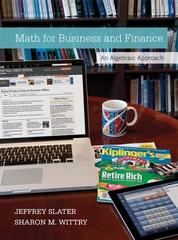Question
KUALA LUMPUR (April 3): Bank Negara Malaysia (BNM) said today household debt, as measured by the household debt-to-gross domestic product (GDP) ratio, expanded at a
KUALA LUMPUR (April 3): Bank Negara Malaysia (BNM) said today household debt, as measured by the household debt-to-gross domestic product (GDP) ratio, expanded at a faster pace in the second half of 2019, primarily driven by loans for the purchase of residential properties.
BNM said in its Financial Stability Review for Second Half 2019 that the ratio of overall household debt-to-GDP rose to 82.7% as at end-2019 amid slower GDP growth, and remained elevated relative to regional peers.
"Demand for residential property loans during the period was bolstered by the Home Ownership Campaign launched by the government. Personal financing and credit card loans also recorded higher growth. This was largely attributed to lending by development financial institutions to civil servants. "Overall debt-servicing capacity of households, however, continues to be supported by income growth and adequate financial buffers. At the aggregate level, both outstanding household financial assets and liquid financial assets remained broadly stable at 2.2 times and 1.4 times of debt, respectively. Household financial assets also continued to outpace the growth in debt for the third consecutive year," it said.
BNM said the vast majority of household borrowers are also expected to be resilient to a significant decline in house prices and income shocks. Risks from household debt exposures remain concentrated among borrowers with monthly earnings of less than RM3,000 and housing loan borrowers with variable income who are more vulnerable to financial stress.
The share of borrowers from the vulnerable income group has continued to decline to 17.6% of total household debt, while the exposure-at-risk for housing loan borrowers with variable income remained low at 2% of total banking system loans, it said. BNM said the elevated level of household indebtedness remains a source of potential risk to macroeconomic and subsequently, financial stability.
Critically examine the 'definition' of household debt mentioned in the mini case study above
Step by Step Solution
There are 3 Steps involved in it
Step: 1

Get Instant Access to Expert-Tailored Solutions
See step-by-step solutions with expert insights and AI powered tools for academic success
Step: 2

Step: 3

Ace Your Homework with AI
Get the answers you need in no time with our AI-driven, step-by-step assistance
Get Started


